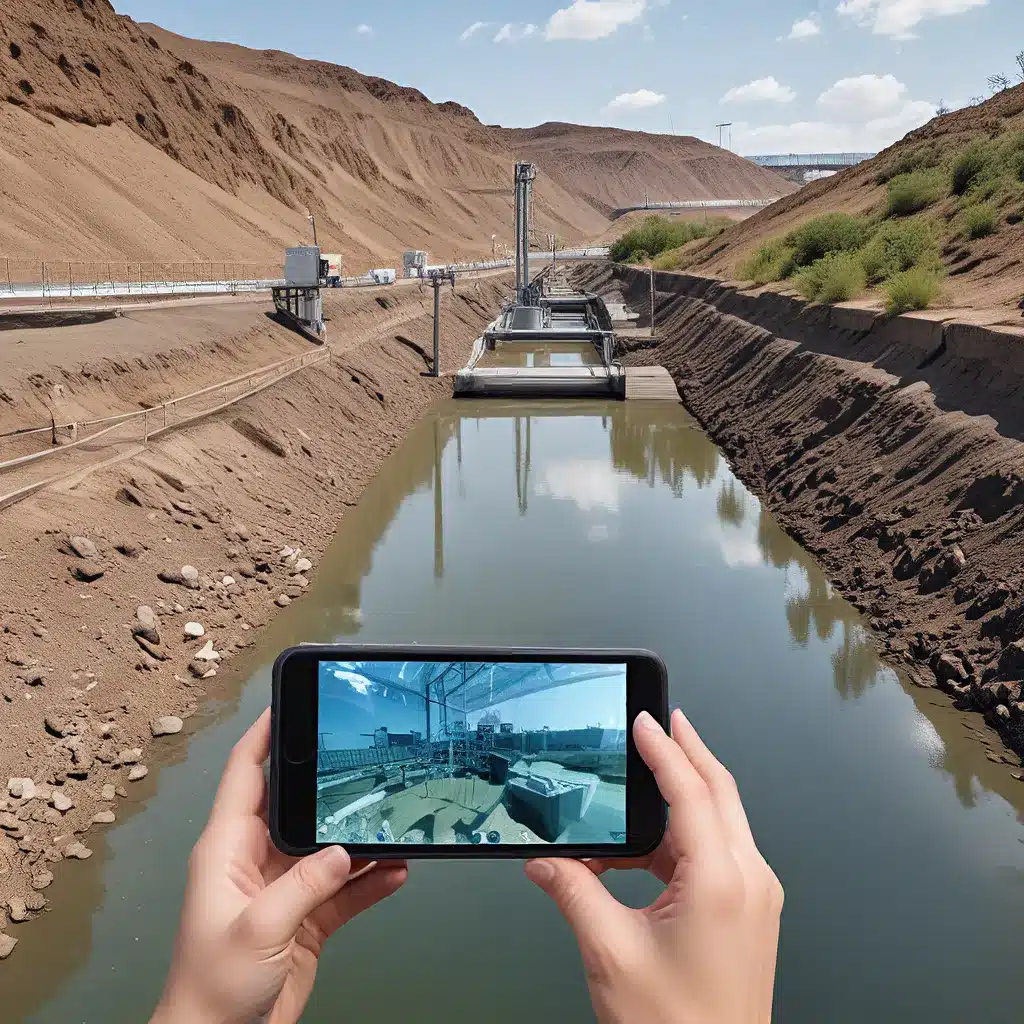
Water treatment and environmental services are the unsung heroes of modern society. Behind the scenes, dedicated teams work tirelessly to ensure our taps flow with clean, fresh water and our wastewater is safely processed. But as our world becomes increasingly digitized, these facilities face a new challenge: how to leverage emerging technologies like augmented reality (AR) to streamline maintenance and operations.
Unlocking the Power of AR in Water Facilities
Picture this: a water plant operator dons a sleek pair of AR glasses and suddenly, the entire facility comes alive with digital overlays. Pipes, valves, and machinery are highlighted, each with vital information about their status and performance. By simply gazing at a piece of equipment, the operator can instantly access maintenance records, identify potential issues, and even receive step-by-step instructions for troubleshooting.
This is the promise of AR – a technology that can transform the way we interact with and maintain our water infrastructure. At Inland Waters, Inc., we’ve been exploring the boundless potential of AR to revolutionize water facility maintenance. And let me tell you, the results have been nothing short of remarkable.
Empowering Frontline Workers
One of the key advantages of AR in water facilities is its ability to empower frontline workers. These dedicated individuals, often working in challenging environments, are the backbone of our operations. With AR, they can access critical information and guidance at the touch of a button, or more accurately, with the blink of an eye.
Imagine a scenario where a technician is troubleshooting a malfunctioning pump. Instead of sifting through a thick maintenance manual, they can simply look at the pump and see detailed schematics, step-by-step repair instructions, and even live feed from sensors monitoring its performance. This level of real-time, contextual information can dramatically reduce downtime, improve efficiency, and enhance the overall safety of the maintenance process.
Bridging the Knowledge Gap
Water facilities are often complex, with a wealth of institutional knowledge that can be difficult to capture and transfer. As experienced professionals retire, their expertise can walk out the door, leaving younger generations to navigate the intricate systems and processes on their own.
AR can help bridge this knowledge gap by serving as a dynamic, interactive knowledge base. Imagine overlaying the facility with digital annotations, highlighting critical components, and providing detailed explanations from seasoned veterans. This not only empowers newer team members but also ensures that valuable insights are preserved and passed down, even as the workforce evolves.
Optimizing Asset Management
Effective asset management is the backbone of any successful water facility. From monitoring equipment performance to scheduling preventive maintenance, these tasks can consume significant time and resources. But with AR, the process becomes far more streamlined and efficient.
By integrating AR with the facility’s asset management system, operators can quickly assess the condition of equipment, track maintenance histories, and even predict potential failures. This proactive approach, known as predictive maintenance, can dramatically reduce unexpected breakdowns, extend the lifespan of assets, and optimize operational costs.
Enhancing Safety and Compliance
In the world of water treatment and environmental services, safety is paramount. Hazardous materials, confined spaces, and high-pressure systems all require meticulous attention to detail and strict adherence to safety protocols. AR can be a game-changer in this regard, providing real-time visual cues and guidance to help workers navigate these potentially dangerous environments.
Imagine an operator entering a chemical storage area. As they don their AR glasses, the space comes alive with digital overlays highlighting the location of emergency shutoffs, the status of ventilation systems, and even the concentration of hazardous gases. This level of situational awareness can significantly reduce the risk of accidents and help ensure compliance with industry regulations.
Embracing Sustainability
As the world grapples with the challenges of climate change and resource scarcity, the water industry has a crucial role to play in promoting sustainability. AR can be a powerful tool in this endeavor, enabling water facilities to optimize their energy consumption, reduce waste, and minimize their environmental impact.
By integrating AR with a facility’s operational data, managers can identify energy-intensive processes, track resource usage, and implement targeted efficiency measures. Moreover, AR-powered predictive maintenance can help extend the lifespan of equipment, reducing the need for energy-intensive replacement and disposal.
The Future is Augmented
As I reflect on the transformative potential of AR in water facilities, I can’t help but feel a sense of excitement and optimism. This technology has the power to empower frontline workers, bridge knowledge gaps, optimize asset management, enhance safety, and promote sustainability – all while improving the overall efficiency and resilience of our critical water infrastructure.
Of course, the journey to fully harnessing AR is not without its challenges. Integrating this technology into existing systems, addressing data privacy concerns, and ensuring user adoption are just a few of the hurdles we must overcome. But at Inland Waters, Inc., we are committed to tackling these obstacles head-on, driven by a vision of a future where water facilities operate with unparalleled efficiency, safety, and sustainability.
So, as you turn on your tap or flush your toilet, take a moment to appreciate the hard work and dedication of the water treatment professionals who make it all possible. And know that with the power of AR, the future of water facility maintenance is brighter than ever before.


